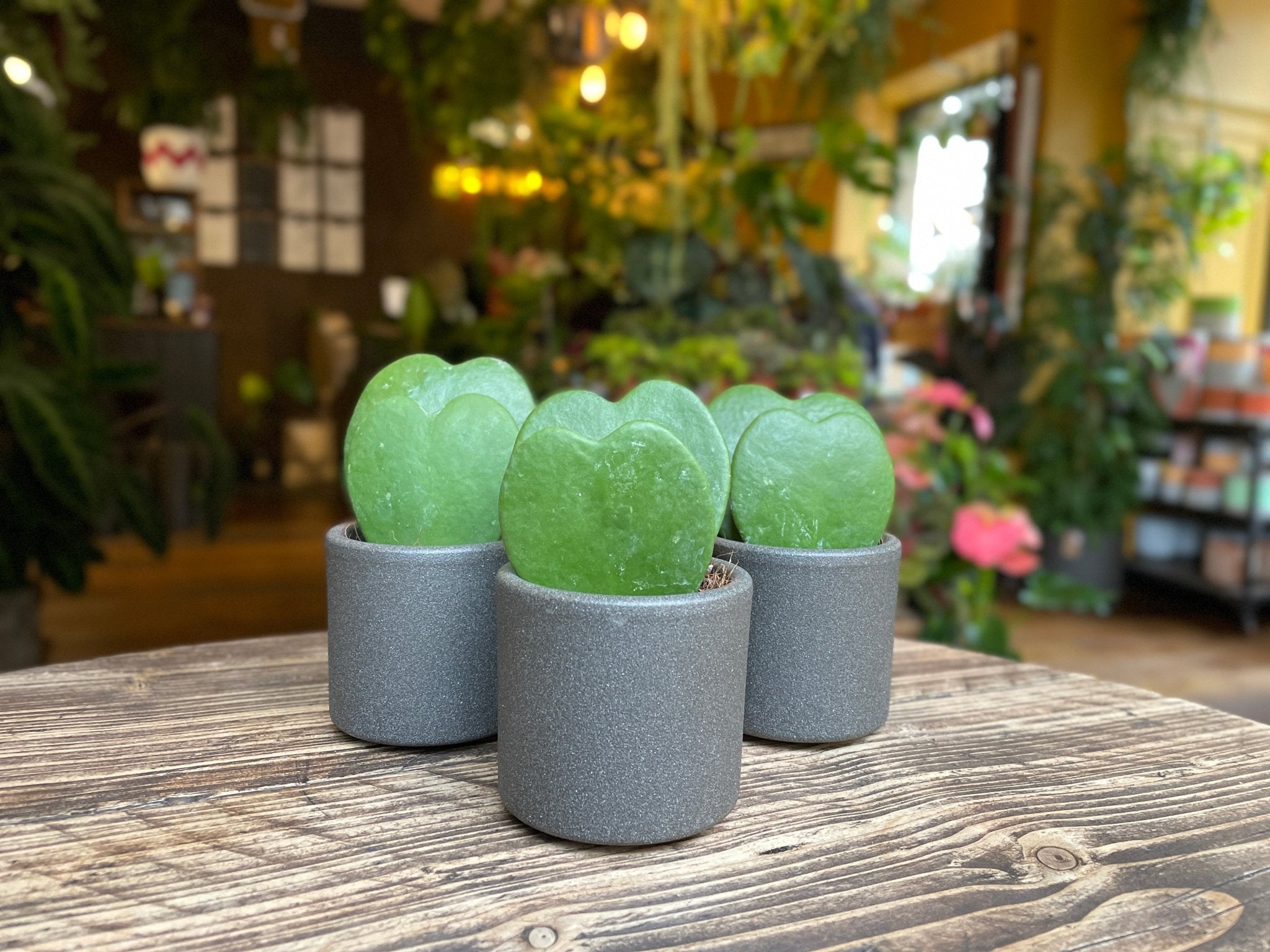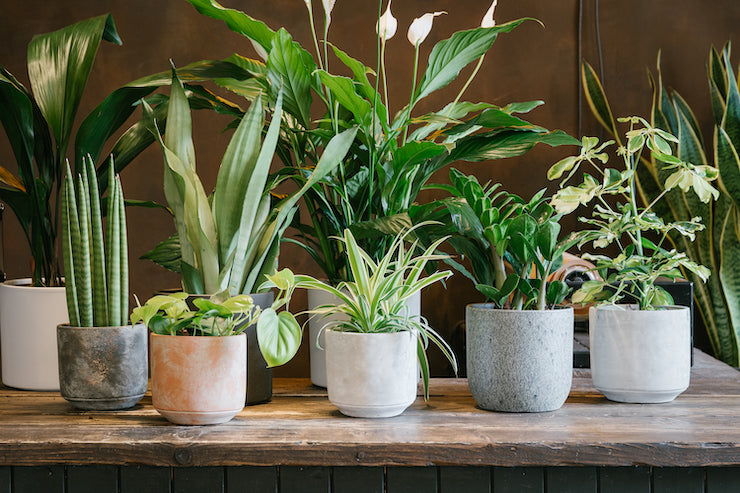
Hurrah for Hoya!
The Hoya genus was first discovered in the 1800s by Scottish Botanist Robert Brown. He decided to name this particular group of plants, Hoya, after his friend and fellow botanist Thomas Hoy who was a gardener for the Duke of Northumberland.
To this day Hoya are a favourite houseplant variety with over 200 species and many more cultivars. They are renowned for their easy-care qualities. Hoya come in many weird and wonderful forms, but here are just a few of our most recent favourites.
This bushy variety of Hoya has gloriously glossy bright green leaves and a trailing growing habit. This variety is often intentionally sun stressed to encourage their leaves to turn red or reddish pink hence this hybrid’s name ‘Sunrise’. However, they do best if positioned in bright, in-direct light. Water thoroughly when the top two inch of soil has dried out completely.
Hoya linearis is a beautiful trailing Hoya with a real whimsical feel. It even produces clusters of incredible white star-shaped flowers. We often hang these beautiful plants pride of place above our counter at 92 Grove Street for extra jungle vibes. Place in bright, in-direct light and allow the top two inches of soil to dry out between waterings. This Hoya is a humidity lover and therefore loves frequent misting using a spray bottle of water.
Most Hoya will easily flower with the right conditions. The flowers will appear as stary porcelain clusters with a sweet scent, which is characteristic of many Hoya. These flowers will typically appear in late summer or Autumn and can last at least 2 weeks.
Popular for its colourful leaves, the variegation on this Hoya looks almost as if it has been painted on! Ideally position the plant in bright, indirect light, however it will tolerate some direct sun in the morning and evening. Water thoroughly when the top two inches of compost has dried out.
Like most Hoya, the carnosa ‘Tricolor’ is very easily propagated. Start by cutting a healthy stem with at least two or three leaves, then remove the base leaf to expose the node. Dip the bottom of the cutting in a rotting hormone. Rooting hormones aren’t absolutely necessary but will increase chances of a successful cutting. We currently stock the Clonex rooting hormone which comes in a powder form and is perfect for propagation projects such as this! Pot the cutting into well-draining soil and keep the soil evenly moist whilst the cutting is rooting, morning sunlight works best.
Another propagation method is water propagation, by following the steps above, once the node is exposed place the base of the stem in water, ensuring only the node is submerged. Pot up when substantial roots appear.
A rare variety of the Hoya family, this one is a real conversation starter with its superb dark veined pattern which pops against vibrant green leaves. To care for the Hoya callistophylla allow the top two inches of soil to dry out before re-watering and place in bright, in-direct light.
We think they look particularly special displayed in our Bergs Potter Romeo glazed pots which are exclusive to our shop at 8b St. Vincent Street.
Hoya kerri has a unique heart-shaped leaf and makes a popular gift choice amongst those we love whether it be a lover, family member or special friend. These plants are usually cultivated with a single leaf and are likely to remain in this single heart form. Look for rarely-seen vined plants for a specimen to grow on. Thriving on neglect the Hoya kerri only needs watered when the soil has completely dried out and prefers to be placed in bright, in-direct light.
Hoya sigillatis is a rarely-seen plant and is renowned for its elongated oval-shaped green leaves adorned with silver speckles. It is epiphytic and therefore, like most Hoya, can be trained to climb up or left as a trailing specimen. Position in bright-indirect light and water thoroughly when the top two inches of soil has dried out.
Join us at our shops at 8b St. Vincent Street and 92 Grove Street and celebrate this fabulous family in all its glorious forms.



